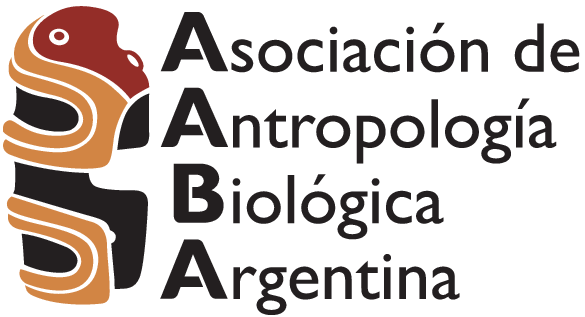Anthropometry and its meaning in XIX century European science
DOI:
https://doi.org/10.24215/18536387e067Keywords:
history, measurement, human bodyAbstract
Scientific research implies theoretical and methodological agreements on the part of a community for the advancement of knowledge in the different disciplines. This set of agreements includes instrumental aspects, i. e., the procedures considered valid for collecting empirical information. Anthropometry is a technique for collecting scientific information about the human being that became widely used during the 19th The aim of this study is to analyze the initial uses of the term “anthropometry” and the conceptualization of this technique in nineteenth-century European science, a moment that can be considered of historical relevance since it preceded the international anthropometric agreements in anthropology at the beginning of the 20th century. Primary sources located in historiographical studies about anthropometry and others identified from these primary sources were used. It was found that the 19th century was a century characterized more by disagreements than by agreements regarding the use of the term “anthropometry” and its meaning in European science. During this period, the concept of anthropometry progressively narrowed until it became closer to that set by international consensus at the beginning of the following century.
Downloads
Metrics
References
Albrizio, A. (2007). Biometry and anthropometry: from Galton to constitutional medicine. Journal of Anthropological Sciences, 85, 101-123.
Anthropometric Committee. (1880). Extracts from the Report of the Anthropometric Committee. Journal of the Anthropological Institute of Great Britain and Ireland, 9, 345-352.
Balzer, W., Moulines, U. y Sneed, J. (2012). Una arquitectónica para la ciencia: el programa estructuralista (Trad. de Pablo Lorenzano). UNQ Editorial.
Baxter, J. (1875). Statistics, medical and anthropological, of the Provost-Marshal-General's Bureau. (Vol. 1). Government Printing Office.
Bergmüller, J. (1723). Anthropometria, Sive Statura Hominis a Nativitate ad consummatum aetatis incrementum ad dimensionum & proportionum Regulas discriminate. J. J. Lotter.
Brabrook, E. (1893). Ethnographical Survey of the United Kingdom. Science, 21, 5.
Broca, P. (1862). Sur les projections de la tête, et sur un nouveau procédé de céphalométrie. Bulletins de la Société d’Anthropologie de Paris, t. III, 1re série, 514-544.
Broca, P. (1865). Instructions générales pour les recherches et observations anthropologiques, anatomie et physiologie. Victor Masson et fils.
Broca, P. (1871). Mémories d’anthropologie. Tomo 1. C. Reinwald et Cie, Libraires-Éditeurs.
Broca, P. (1879). Instructions générales pour les recherches anthropologiques à faire sur le vivant. Seconde édition, revue et augmentée. G. Masson.
Davis, J. (1861). On the method of measurements, as a diagnostic means of distinguishing human races, adopted by Drs. Scherzer and Schwarz in the Austrian Circumnavigatory Expedition of the "Novara". Transactions of the Ethnological Society of London, 1, 123-128.
Duckworth, W. (1912). The international agreement for the unification of anthropometric measurements to be made on the living subject. Report of the commission appointed by the XIVth International Congress of Prehistoric Anthropology and Archaeology at Geneva (1912). En A. Hrdlička (1920), Anthropometry (pp. 10-24). Wistar Institute of Anatomy and Biology.
Elsholtz, J. (1654). Anthropometria, accessit doctrina naevorum. Typis Matthaei Cadorini.
Farinola, M.G. y Bortz, J.E. (2022). El ingreso de la antropometría a la ciencia argentina: 1870-1890. En XXI Jornadas de Historia del Pensamiento Científico Argentino. 26 de agosto de 2022. Fundación para el Estudio del Pensamiento Argentino e Iberoamericano. CABA, Argentina. http://www.fepai.org.ar/paginas/ahcienciaXXI.html
Farr, W. et al. (1880). Report of the Anthropometric Committee. Report of the Fiftieth Meeting of the British Association for the Advancement of Science. John Murray.
Galton, F. (1882). The anthropometric laboratory. Fortnightly Review, 31, 332-338.
Galton, F. (1885). Anthropometric per-centiles. Nature, 31, 223-225.
Galton, F. (1885). Some results of the Anthropometric Laboratory. Journal of the Anthropological Institute, 14, 275-287.
Galton, F. (1887). A descriptive list of anthropometric apparatus, consisting of instruments for measuring the chief physical characteristics of the human body. Clay and Sons.
Galton, F. (1887). On recent designs for anthropometric instruments. Journal of the Anthropological Institute, 16, 2-8.
Galton, F. (1892). Communication from Mr. Francis Galton on international anthropometry. Bulletin de L'Institut International de Statistique, 6, 10-12.
Galton, F. (1906). Anthropometry at schools. Journal of Preventive Medicine, 14, 93-98.
Galton, F. (1908). Memories of my life. Methuen & Co.
Galton, F. et al. (1884). Final Report of the Anthropometric Committee. Report of the Fifty-third Meeting of the British Association for the Advancement of Science (pp. 253-306). John Murray, Albemarle Street.
Garson, J. y Read, C. (1892). Notes and queries on anthropology. A guide for anthropological research for the use of travelers and others. Harrison and sons.
Kuhn, T. (2004). La estructura de las revoluciones científicas (8a reimp., Trad. de Agustín Contin). Fondo de Cultura Económica.
Lane Fox, A. (1874). Notes and queries on anthropology. For the use of travelers and residents in uncivilized lands. Stanford and Cross.
Lombroso, C. (1872). Antropometria di 400 delinquenti veneti del penitenziario di Padova. Reale Istituto lombardo di scienze e lettere, 5(2), 574-582.
Manouvrier, L. (1898). Aperçu de céphalométrie anthropologique. L'année Psychologique, 5, 558-591.
Manouvrier, L. (1900). Généralités sur l’anthropométrie. Revue de l'École d'anthropologie de Paris. Tomo X.
Quetelet, A. (1870). Anthropométrie, ou Mesure des différentes facultés de l'homme. C. Muquardt.
Quetelet, A. (1870). Des lois concernant le développement de l’homme. Bull Acad Roy Sci Lettr Beaux Arts Belg, 39e année, tome 29, 2me série, 669-680.
Roberts, C. (1876). The physical requirements of factory children. Journal of the Statistical Society, 39, 681-733.
Roberts, C. (1878). A manual of anthropometry; or A guide to the physical examination and measurement of the human body. J. & A. Churchil, New Burlington Street.
Scherzer, K. y Schwarz, E. (1858). On measurements as a diagnostic means for distinguishing the human races: a systematic plan established and investigated by the undersigned, for the purpose of taking measurements on individuals of different races during the voyage of H.I.R.M.'s Frigate "Novara" round the world. W. Hanson, Govt. Print.
Scherzer, K. (1861). Narrative of the circumnavigation of the globe by the Austrian frigate Novara (vol. 1). Saunders, Otley, and Co.
Schwarz, E. (1862). Novara Expedition: Anthropology: A system of anthropometrical investigations as a means for the differential diagnosis of human races: Some general results of the measurements: The instruments required. Vienna: Imperial Court and Govt. Print. Off.
Spencer, F. (1997). Anthropometry. En F. Spencer (Ed.), History of physical anthropology: An encyclopedia (pp. 80-90). Garland.
Spencer, F. (1997). Manouvrier, Léonce-Pierre (1850-1927). En F. Spencer, (Editor), History of physical anthropology: An encyclopedia (pp. 642-643). Garland.
Ten Kate, H. F. C. (1892). Somatological observations on Indians of the Southwest. Journal of American Ethnology and Archaeology, 3, 119-144.
Topinard, P. (1876). L’anthropologie. C. Reinwald et Cie.
Topinard, P. (1881). Observations upon the methods and processes of anthropometry. The Journal of the Anthropological Institute of Great Britain and Ireland, 10, 212-224.
Downloads
Published
How to Cite
Issue
Section
License
Copyright (c) 2023 Martín Gustavo Farinola, Jaime Elías BortzThe RAAB is a diamond-type open access journal. There are no charges for reading, sending or processing the work. Likewise, authors maintain copyright on their works as well as publication rights without restrictions.



























